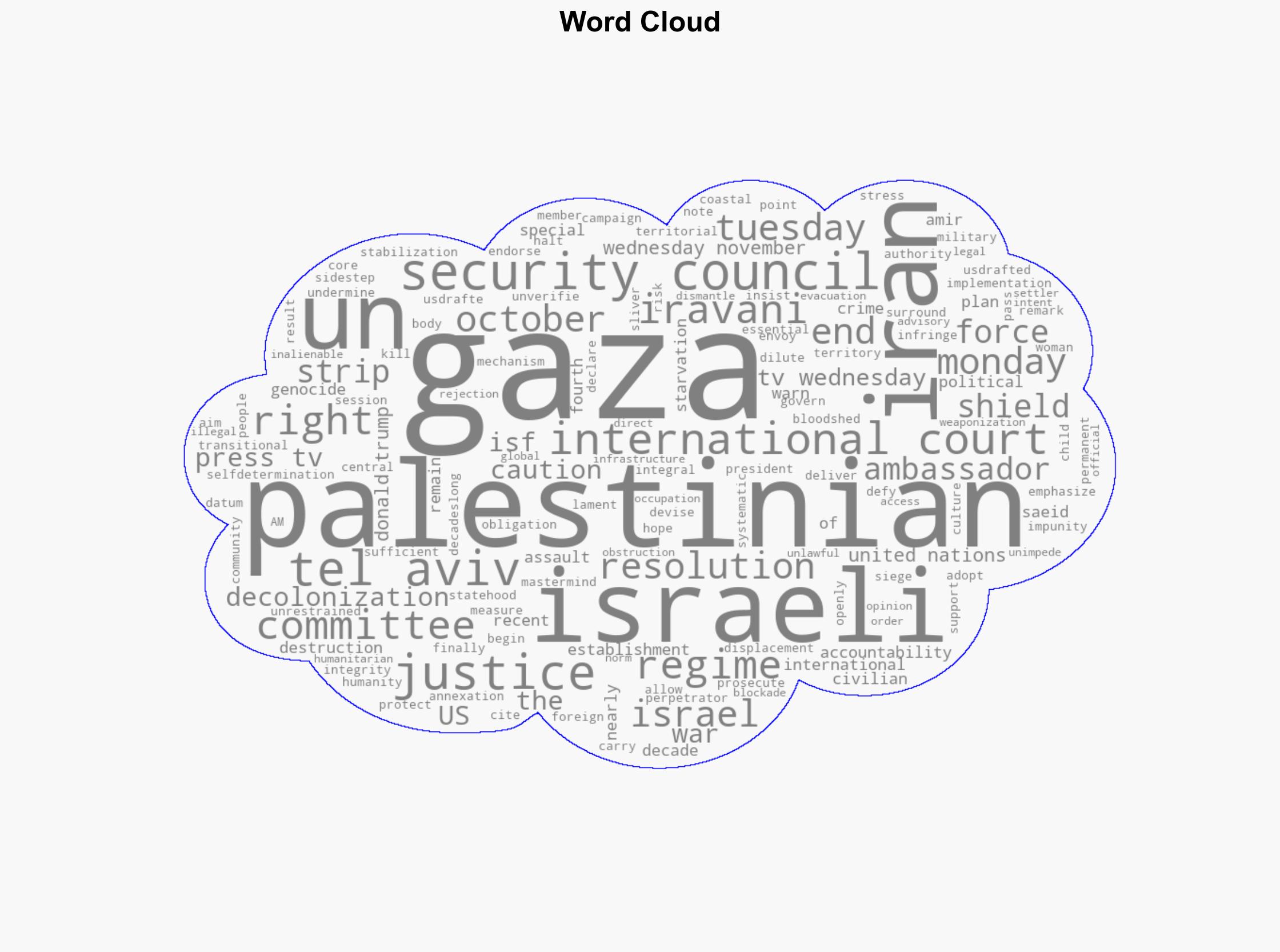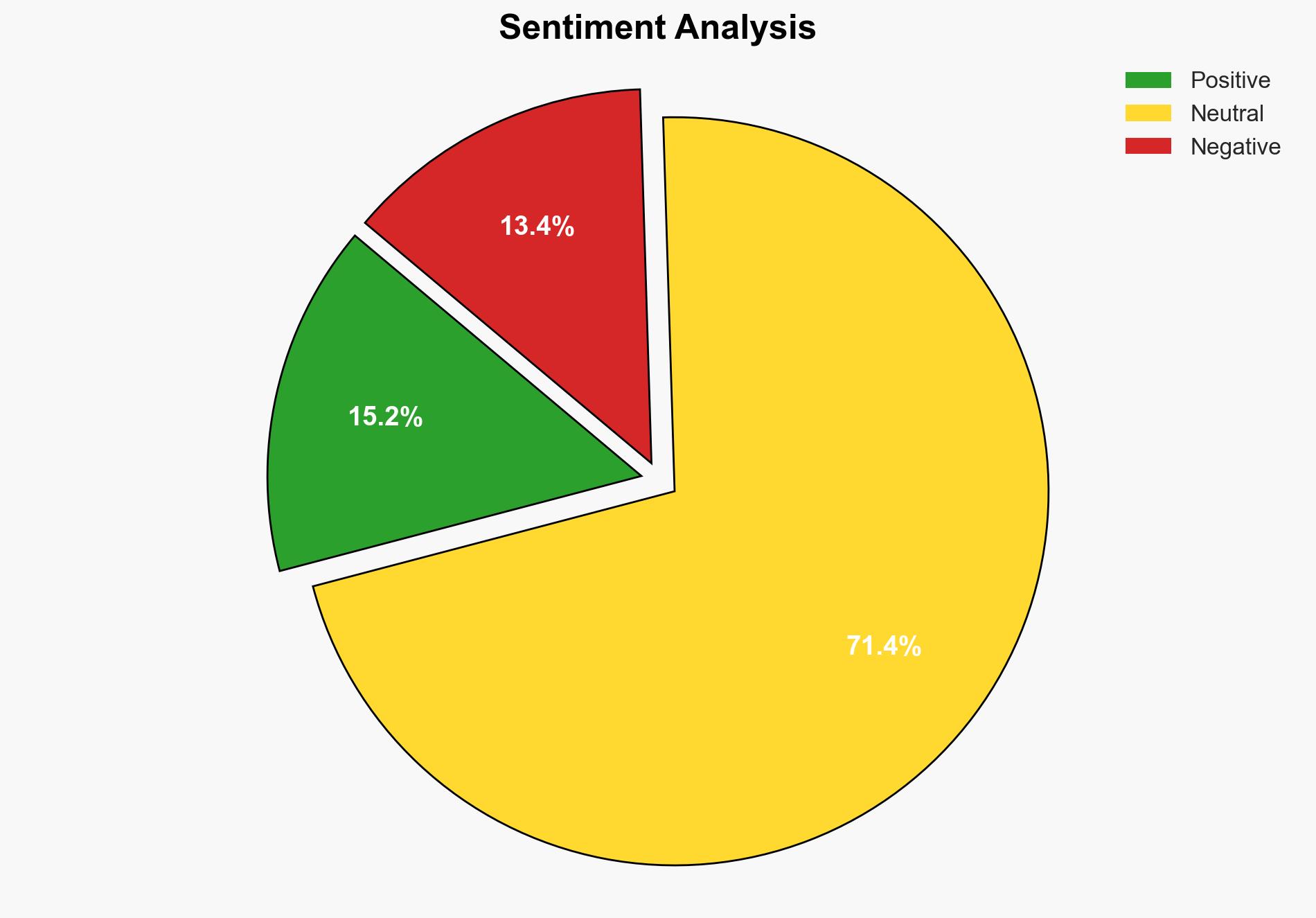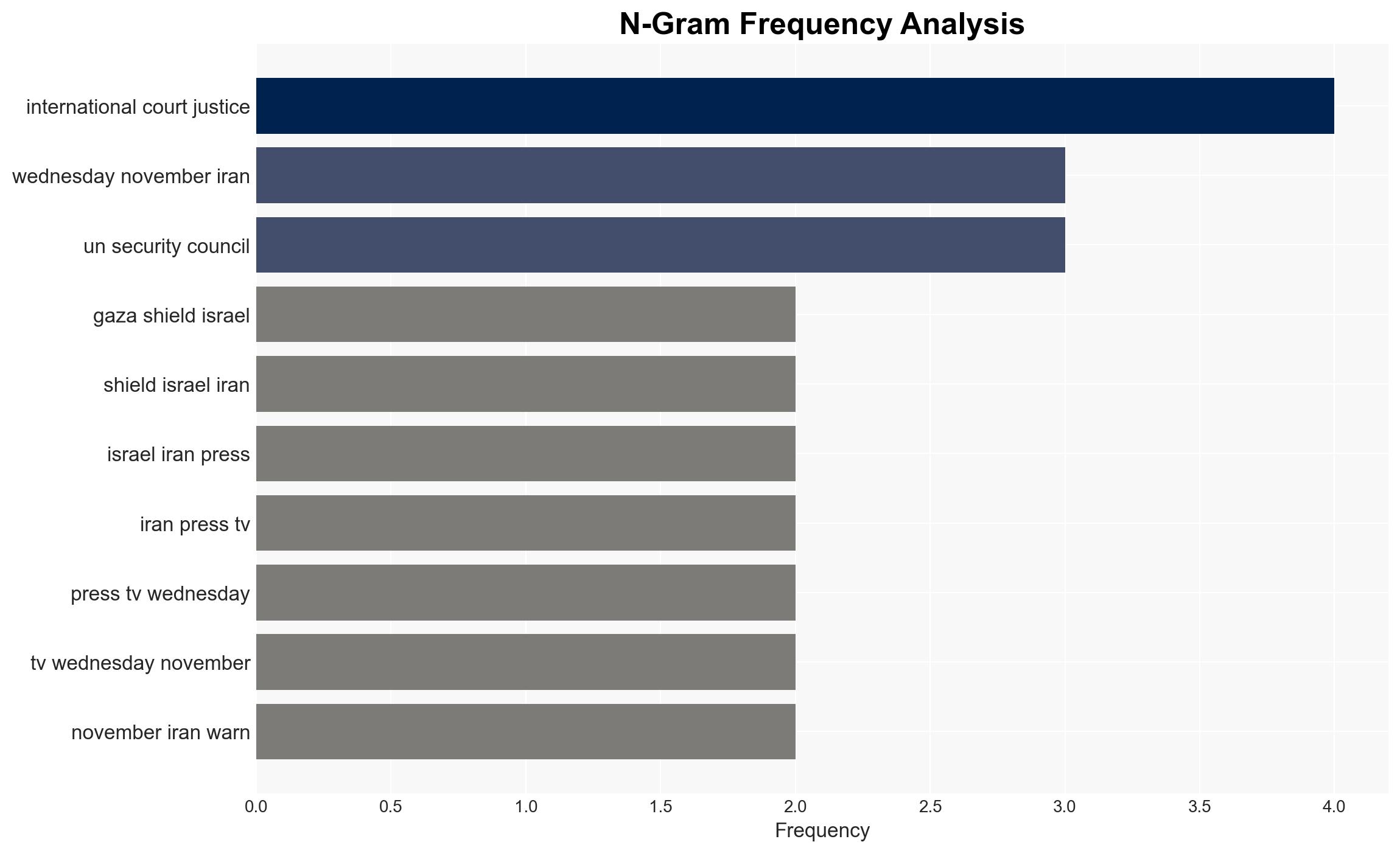Iran US-drafted resolution on Gaza must not be used to shield Israel – Globalsecurity.org
Published on: 2025-11-20
AI-powered OSINT brief from verified open sources. Automated NLP signal extraction with human verification. See our Methodology and Why WorldWideWatchers.
Intelligence Report:
1. BLUF (Bottom Line Up Front)
The most supported hypothesis is that Iran’s opposition to the US-drafted resolution is primarily aimed at maintaining its influence over Palestinian territories and countering US and Israeli strategic interests in the region. Confidence Level: Moderate. Recommended action includes diplomatic engagement with key UN Security Council members to address concerns and ensure balanced implementation of the resolution.
2. Competing Hypotheses
Hypothesis 1: Iran’s opposition to the resolution is a strategic move to maintain its influence over Palestinian territories and counter US and Israeli interests. This is supported by Iran’s historical stance and its strategic interest in the region.
Hypothesis 2: Iran’s stance is primarily driven by genuine concern for Palestinian rights and the potential undermining of these rights by the resolution. This is consistent with Iran’s public statements and advocacy for Palestinian self-determination.
Hypothesis 1 is more likely given Iran’s geopolitical strategy and historical actions in the region, aligning with its broader regional objectives.
3. Key Assumptions and Red Flags
Assumptions: It is assumed that Iran’s public statements reflect its true strategic intentions. Additionally, it is assumed that the US-drafted resolution is perceived as favoring Israeli interests.
Red Flags: Potential bias in Iran’s statements, as they may be intended to rally international support against perceived US-Israeli alignment. The use of unverified data by Iran could indicate an attempt to manipulate perceptions.
4. Implications and Strategic Risks
The resolution could lead to increased tensions between Iran and the US-Israel alliance, potentially escalating into broader regional conflicts. There is a risk of political and informational warfare, with Iran leveraging media to influence global opinion. Economic sanctions or cyber operations could be employed as retaliatory measures by involved parties.
5. Recommendations and Outlook
- Engage diplomatically with UN Security Council members to address Iran’s concerns and ensure a balanced approach to the resolution’s implementation.
- Monitor Iranian media and diplomatic channels for shifts in rhetoric or strategy.
- Best-case scenario: Successful diplomatic engagement leads to a balanced resolution implementation, reducing tensions.
- Worst-case scenario: Escalation into broader regional conflict, with increased military and economic confrontations.
- Most-likely scenario: Continued diplomatic tensions with periodic escalations in rhetoric and minor skirmishes.
6. Key Individuals and Entities
Amir Saeid Iravani: Iran’s Permanent Ambassador to the United Nations, key spokesperson for Iran’s stance.
Donald Trump: Former US President, associated with the plan mentioned in the resolution.
7. Thematic Tags
Structured Analytic Techniques Applied
- Cognitive Bias Stress Test: Expose and correct potential biases in assessments through red-teaming and structured challenge.
- Bayesian Scenario Modeling: Use probabilistic forecasting for conflict trajectories or escalation likelihood.
- Network Influence Mapping: Map relationships between state and non-state actors for impact estimation.
Explore more:
National Security Threats Briefs ·
Daily Summary ·
Support us





